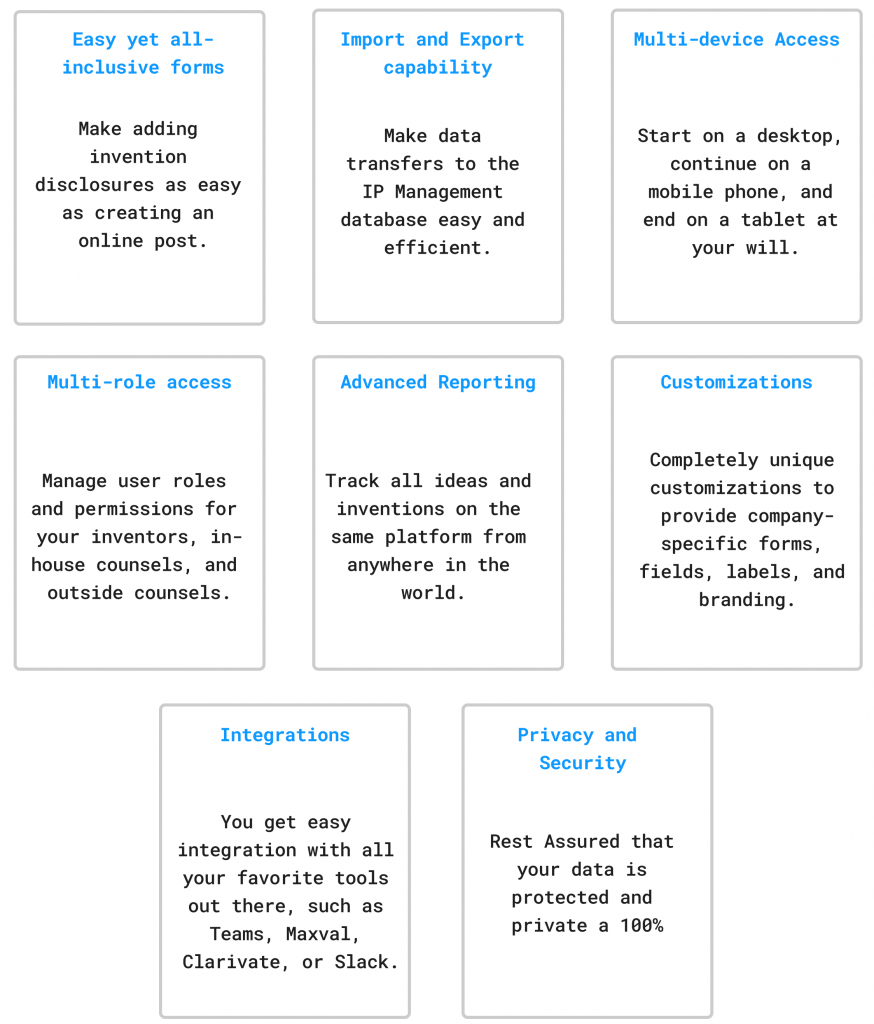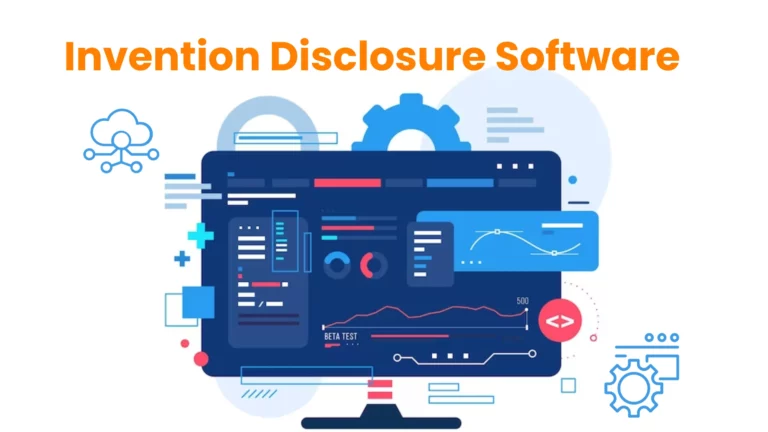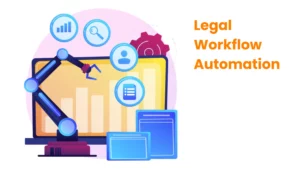Imagine your company is at the forefront of technology innovations or at least wants to be at the top. You have employees-cum-inventors putting in their efforts to their research.
Their blood, sweat, and tears could bring invaluable intellectual property and business innovation to your organization. So, what practices do you follow for inbound innovation management? Does invention disclosure software keep your IP safe till it’s filed with the patent office?
Say Caleb Pereira, a senior AI researcher, developed a groundbreaking algorithm for natural language processing (NLP). This algorithm has the potential to revolutionize contextual understanding in machine learning models.
How will Caleb secure his invention?
Are your inventors aware of invention disclosures and their importance? Is invention disclosure management an intrinsic part of your organization?
What is an invention disclosure?
So far, we have asked you questions to help you ponder on your existing invention disclosure process and practices. We want you to be clear about a few aspects before reviewing the features of invention disclosure software.
The first aspect is, of course, the invention disclosure meaning.
Every stakeholder, inventor, and innovator must be on the same page regarding what invention disclosure means for your organization.
Ideally, an invention disclosure statement refers to documenting and managing inventions.
It is an inventor’s first notification to their company that they have an invention worth protecting. The invention disclosure form establishes their ownership and includes the invention’s technical specifications, design, functionality, and details of co-inventor contributions.
Implementation of Invention Disclosure Software
In the beginning, we mentioned how an inventor could develop a groundbreaking algorithm for natural language processing with the potential to revolutionize machine learning models.
Recognizing the importance of protecting such intellectual property, organizations implement sophisticated invention disclosure software tailored to the technical intricacies of technology, such as AI or NLP.
Traditionally, companies used invention disclosure form Word or Excel templates to capture intricate and confidential details of inventions. This is probably the reason community forums were filled with questions, such as:
“Do you lose any rights or privacy to your inventions if you disclose them to your advisor?”
There were always inhibitions and a lack of motivation in people to disclose their inventions.
This is where the need for an inventor-friendly yet business-oriented IP management software comes in.
The software is safely used by research and development (R&D) teams, inventors, and intellectual property (IP) professionals to streamline the disclosure, evaluation, decision-making, tracking, and protection of new ideas and innovations.
Stakeholders leverage it to capture the output of employees throughout the innovation cycle.
The Must-Have Features in Invention Disclosure Software
#1 Help Generate and Capture Innovation
Onboard an invention disclosure system that takes care of all the innovation stages, starting from ideation to implementation. The role of invention disclosure platforms is not limited to being only an invention disclosure template.
However, a good platform assists you in generating ideas and nailing the ideation phase. It enables users to engage in interactive brainstorming sessions, where an AI model generates creative suggestions and prompts open-ended brainstorming questions. It becomes a Northstar that pulls inventors in the right direction.
And it allows every employee to share their ideas, big or small effortlessly. Not every idea needs to be an invention. Organizations need to capture innovation in all forms to scale. And invention disclosure software allows that.
#2 Customized and Standardized Submission Forms
Users must be able to submit invention disclosures through standardized electronic forms. Apart from the common fields mentioned below, it must include unique fields and aspects relevant to your company standards.
- Who is the inventor? What is their contact information?
- What is the invention and its detailed description?
- What is the inventor trying to improve?
- What is the difference between the new idea and the existing solutions?
- What technical effect will the invention have?
- What makes the invention unique?
- Is there any prior art?
- What are the significant dates?
- Funding sources.
- Signatures of inventors, co-inventors, and witnesses.
- Any supporting documents.
On top of it, the invention disclosure software must provide a user-friendly submission experience with easy-to-use forms that guide inventors through the process of documenting their innovations.
It is a basic requirement that enables an inventor, like Caleb, to submit a disclosure form, providing detailed information about his invention, including its applications and potential impact.
#3 Centralized Collaboration Hub
What our research and, most importantly, our client data suggest is that after onboarding an idea and innovation management software, organizations see a hike in collaborative invention. Basically, inventors prefer working with co-inventors rather than individually to bring their ideas to fruition.
So, the software must facilitate collaboration among inventors, researchers, evaluators, attorneys, drafting committees, and other stakeholders. It should be the exclusive platform for discussions, comments, and updates related to the invention disclosure.
Legal experts and stakeholders must be able to provide feedback directly within the platform. This iterative process improves the quality of the invention disclosure and ensures that potential issues are addressed early on.
#4 Tech Harmony with IP Management Systems
The software must integrate with intellectual property management systems to ensure a seamless transfer of information between the invention disclosure software and the broader IP portfolio management tools. Think of it as the DJ making sure the beats are perfect for the dance floor. It enables a holistic view of the organization’s intellectual property, including the inventor’s existing patents and other intellectual property assets, aiding in strategic decision-making and resource allocation.
The added benefit of having it integrated with heavy-lifting and comprehensive IP software is enjoying end-to-end lP lifecycle management on the topmost tools without compromising your budget.

#5 Document Management and Storage
Provides a robust document management system for uploading, organizing, and storing supporting documents. This includes research papers, diagrams, prototypes, and any other materials relevant to the disclosed invention.
Since it acts as a live repository, it enables quick and efficient search and retrieval of information related to past and current invention disclosures, making it easier to avoid duplication and leverage existing knowledge.
#6 Workflow Automation
Implements automated workflows that take invention disclosures through a predefined process. This could involve stages like initial evaluation, legal review, and approval. Automation reduces manual effort, accelerates decision-making, and ensures a systematic progression. Every cog in the process gets its due reminder, structure, and access to do the needful.
This automation accelerates the overall process.
#7 Reminder Bells and Whistles
The invention disclosure software must send automated notifications and alerts to relevant parties, keeping them informed about the status of the invention disclosure, upcoming deadlines, and other important milestones.
Nothing matters more than the inventor’s experience and ensuring that they don’t miss the window for protection.
#8 Security and Compliance: Playing by Patent Rules
Ensures that the information related to inventions is secure, compliant with data protection regulations, and accessible only to authorized individuals. It must prioritize the security and confidentiality of sensitive information. Robust access controls and encryption mechanisms safeguard the details of inventions, especially during the early stages when confidentiality is crucial.
The access must be restricted to authorized individuals and comply with patent laws and regulations. The software should assist in creating comprehensive patent applications that align with legal requirements, reducing the risk of challenges during the examination process.
#9 Reporting and Analytics
Decision-making insights leadership’s benefit: Analytics tools within the software provide leadership with insights into the organization’s innovation pipeline. They can identify whether the inventor’s goals align with the company’s strategic goals and show promise for patentability.
It provides reporting tools to track the progress of invention disclosures, evaluate the efficiency of the innovation process, and generate insights for decision-making.
These insights help organizations assess the efficiency of their innovation processes, identify bottlenecks, and make data-driven improvements.
#10 Multi-device Accessibility
It’s best to have access to all devices. You don’t know where and when the motivation strikes you. Therefore, it should allow users to submit, review, and collaborate on invention disclosures from anywhere.
Recognizing the modern work landscape, collaboration on the go, and enhancing accessibility is the way to go.
#11 AI-Enhanced Invention Disclosures
With the rise of artificial intelligence, the invention disclosure process has become more efficient, insightful, and user-friendly. AI-powered features like PQAI and Inventor Assistant are transforming the way inventors document and refine their ideas.
PQAI allows inventors to quickly run comprehensive prior art searches, ensuring that their ideas are truly unique and reducing the risk of redundancy. Instead of manually sifting through thousands of patents and publications, PQAI uses AI to analyze vast databases and present relevant results, giving inventors a head start in evaluating the patentability of their invention.
Inventor Assistant, on the other hand, leverages AI to help inventors during the brainstorming and ideation phase. It prompts users with intelligent suggestions, asks open-ended questions, and assists in structuring their invention disclosures. This ensures that key technical details are captured accurately and comprehensively, all while making the process less daunting for first-time inventors.
By integrating AI into invention disclosures, organizations significantly enhance the quality of submissions, reduce time spent on administrative tasks, and give their inventors the tools they need to focus on innovation.
Starting a Successful Patent Filing Process
Invention disclosure software plays a crucial role in initiating and facilitating a successful patent filing process. The software provides standardized forms for inventors to submit detailed information about their inventions. It ensures that inventors include essential details such as the title, description, potential applications, inventors’ names, and supporting documents in a consistent format.
Essentially, a strong invention disclosure helps one get done with 90% of the patent application work. Experts say it can cut down the patent application drafting process to a month or two from months or even a year.
Without invention disclosure software, documenting new ideas and inventions can be chaotic and archaic, leading to inconsistent records and potential oversights.
By streamlining the disclosure process, the software helps in the early identification of inventions with potential for patent protection. It even allows for quick evaluation of whether an invention meets the patentability criteria, helping organizations prioritize patent filing for the most promising innovations.
In Review: Invention Disclosure Impact Factor
How exactly do leaders or top management benefit from having this software in place within their organization?
Leaders and top management derive several strategic and operational benefits from implementing invention disclosure software within their organization. Here’s how they stand to gain:
Strategic Decision-Making
Invention disclosure software provides detailed insights and analytics. Leaders can make informed decisions by analyzing data on the organization’s innovation pipeline, identifying trends, and strategically allocating resources based on the value and potential of disclosed inventions.
Efficient Resource Allocation
The software streamlines workflows and automates processes. Innovation leaders can optimize resource allocation by ensuring that innovation processes are efficient, reducing manual effort, minimizing bottlenecks, and allowing teams to focus on high-potential inventions.
Automation of workflows also reduces manual effort and associated costs by automating repetitive tasks, reducing the time spent on administrative processes, and improving overall operational efficiency in managing the innovation pipeline.
Holistic IP Portfolio Management
It integrates with intellectual property management systems and gives a comprehensive view of the organization’s intellectual property portfolio, facilitating better strategic planning, risk management, and decision-making related to IP assets.
Increased Innovation Visibility
The software enhances transparency in the innovation process and leaders gain visibility into ongoing innovation activities. It helps them to monitor progress, identify areas for improvement, and celebrate successes, fostering a culture of innovation within the organization.
Improved Time-to-Market
Automation and streamlined workflows reduce time delays. Leaders can accelerate the time-to-market for innovations by minimizing delays in the invention disclosure and evaluation process, allowing the organization to capitalize on market opportunities more swiftly.



